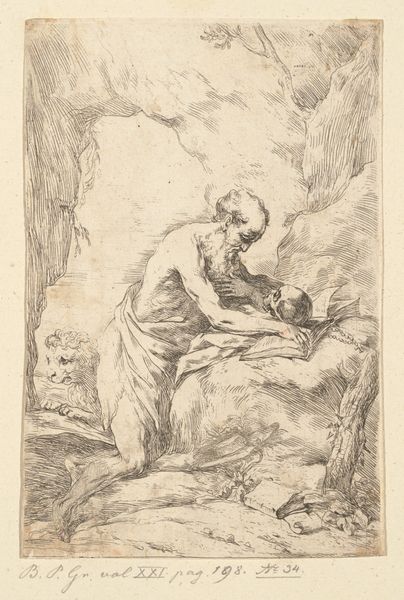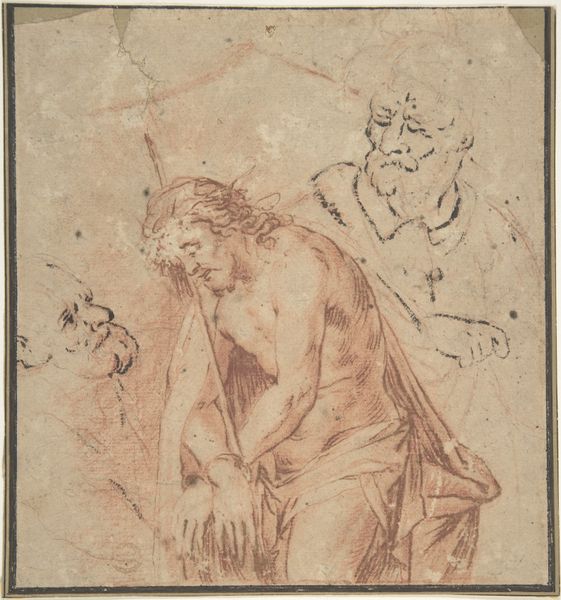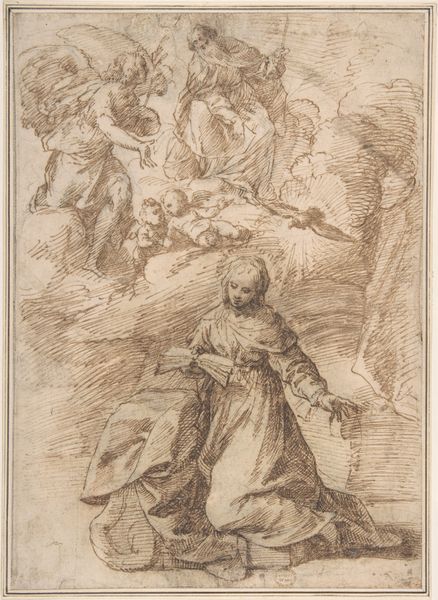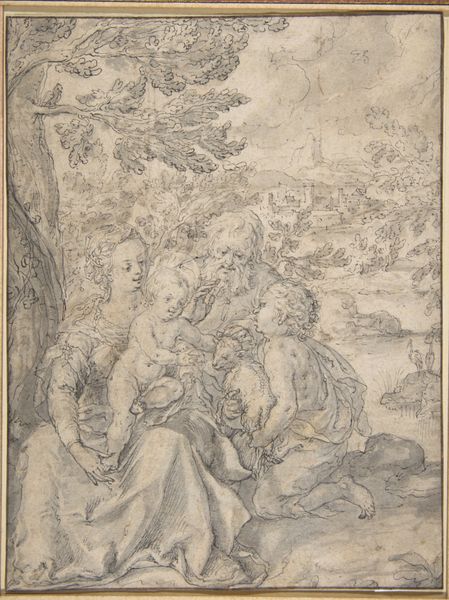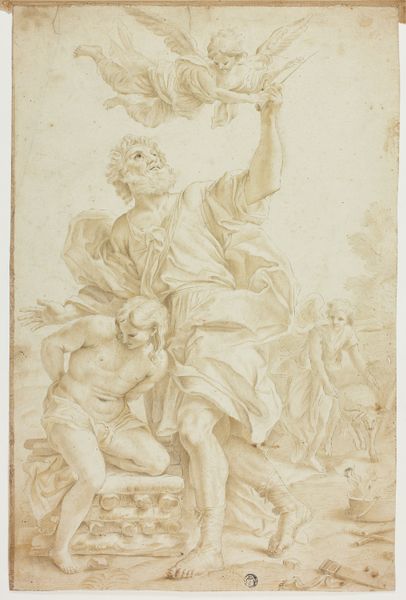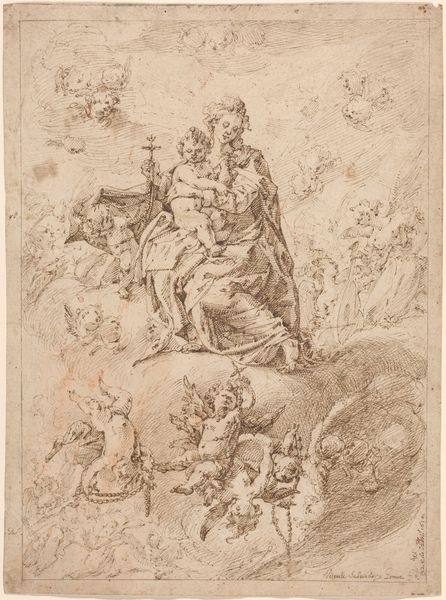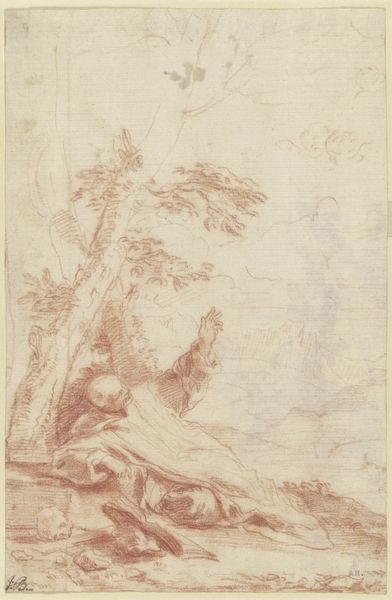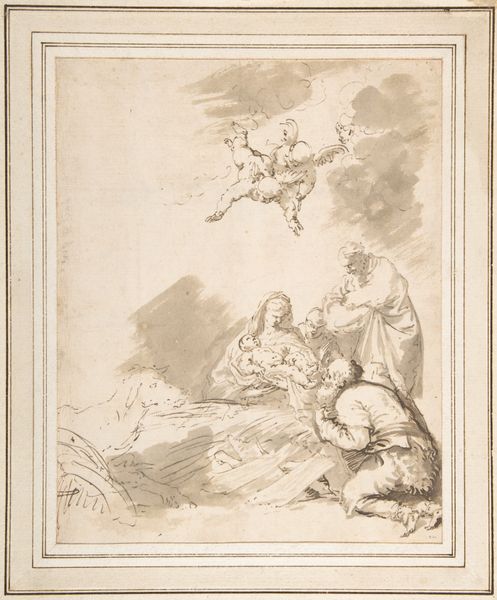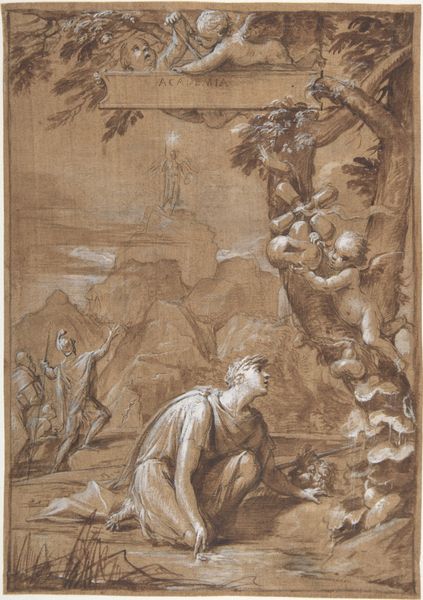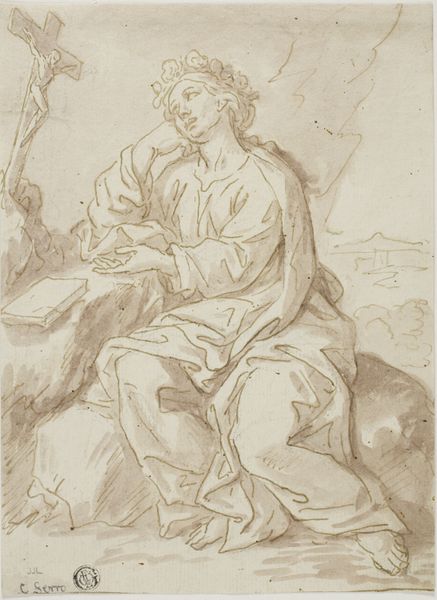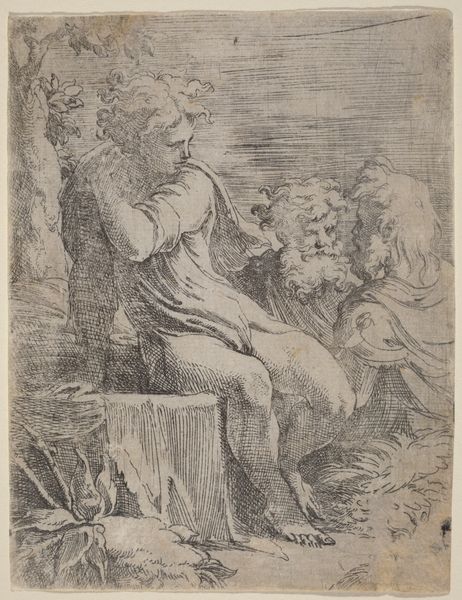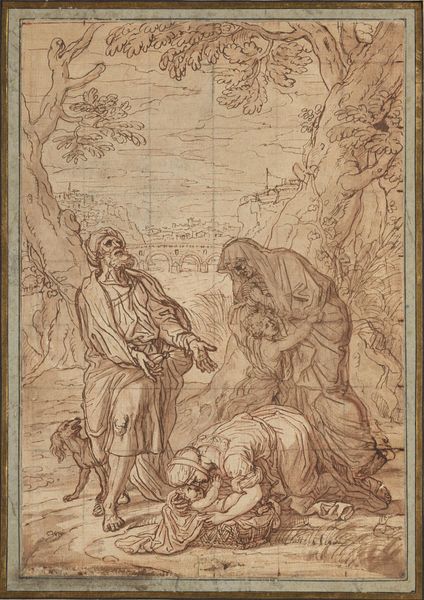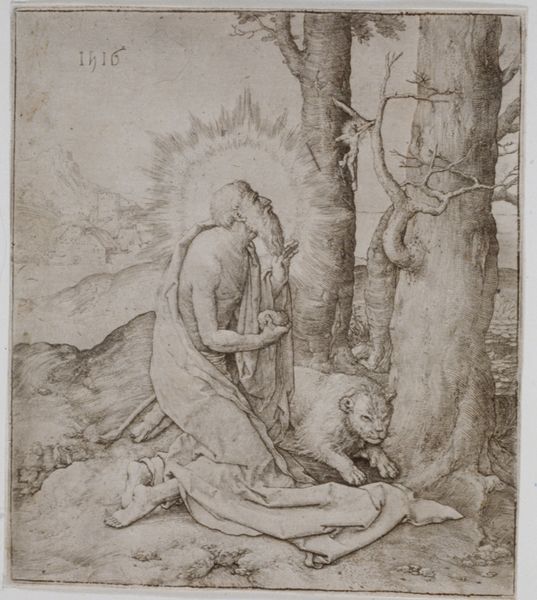
drawing, print, paper, pen
#
drawing
#
narrative-art
#
baroque
# print
#
figuration
#
paper
#
pen
#
history-painting
Dimensions: 7-3/4 x 6-3/4 in. (19.7 x 17.1 cm)
Copyright: Public Domain
Editor: We’re looking at "Agony in the Garden," a drawing dating from between 1600 and 1700, currently held at the Metropolitan Museum of Art. It looks like a pen and ink drawing on paper. I am immediately struck by the figure's posture and the angel holding a cup – what do you see in this piece, from a formalist perspective? Curator: Immediately, the linear quality dominates; the artist relies heavily on contour and hatching to define form, yet there is a distinct lack of concern for consistent tonal modeling. The composition uses a stark contrast of implied space. Editor: Implied space? Curator: Observe the flattened picture plane against which these figures reside. While the composition alludes to a recession into space, particularly with the angel floating above, the overlapping of forms feels rather ambiguous, creating a sense of tension. Do you perceive how this compression serves to heighten the drama? Editor: Yes, the composition definitely creates tension! So the artist's deliberate manipulation of space emphasizes the scene's emotional intensity, more so than if they had depicted realistic depth? Curator: Precisely. Furthermore, examine the agitated lines and the sketch-like quality of the drawing. These visual elements underscore the psychological distress inherent in the subject matter. Consider how the use of line and form work together to convey meaning. Editor: This has highlighted aspects I hadn't considered – the visual elements amplifying the emotional narrative. Curator: Indeed. By understanding these elements, we unlock the layers within the work itself.
Comments
No comments
Be the first to comment and join the conversation on the ultimate creative platform.
